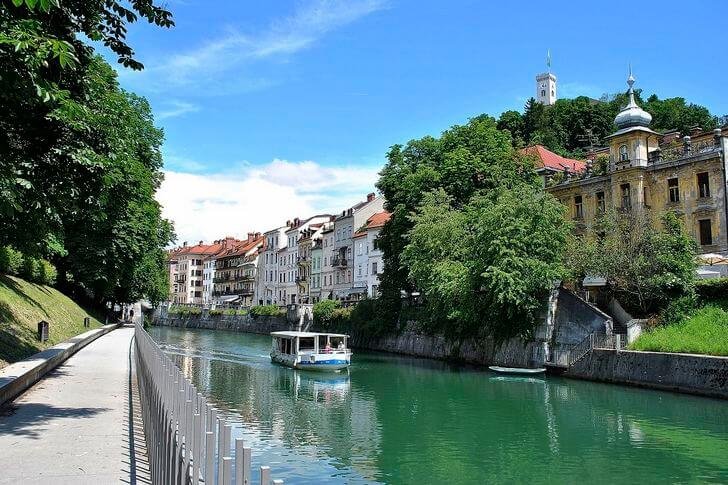Little Ljubljana is not yet very popular with tourists. Indeed, if you come here after visiting the sights of Paris or Vienna, you may get the impression that there is absolutely nothing to see in the capital of Slovenia. But this is absolutely not true. The inhabitants of the city are distinguished by cordiality and hospitality, and historical buildings, churches and squares are in no way inferior to the memorable places of the promoted European capitals.
It is better to start acquaintance with the city from Prešeren Square, the Old Town and Ljubljana Castle. Then you should go to the local museums and enjoy the beauty of nature in the Tivoli Park. A complete impression of Ljubljana will develop after visiting the Ursuline Church of the Holy Trinity and the Cathedral of St. Nicholas. Finally, you should definitely look at the city's central market.
What to see and where to go in Ljubljana?
The most interesting and beautiful places for walking. Photos and a short description.
- Old city
- Prešeren Square
- Ljubljana castle
- Funicular to Ljubljana Castle
- Triple bridge
- Bridge Serpent
- Myasnitsky bridge
- National Museum of Slovenia
- National Gallery of Slovenia
- Railway Museum of Slovenia
- Slovenian Opera and Ballet Theater
- Franciscan church
- Cathedral of Saint Nicholas
- Ursuline Church of the Holy Trinity
- Ljubljana skyscraper
- Ljubljana Town Hall
- Ljubljana Central Market
- Ljubljana Zoo
- Tivoli Park
- River Ljubljanica
Old city
The compact Old Town is located in the heart of Ljubljana and can be easily explored on foot. Here is one of the recognizable symbols of the capital of Slovenia - the Venetian-style Triple Bridge, from which roads diverge in different directions. The streets of the Old Town are tiled in the classical European tradition. Souvenir shops are located in well-maintained stone houses.

Prešeren Square
A small square in the center of Ljubljana, which is connected to the Old Town via the Triple Bridge. She was named after the Slovenian poet Franz Prešeren. Despite its modest size, the area is quite picturesque. It is surrounded by mansions of the beginning of the 20th century, in the middle there is a romantic monument to the poet by the sculptor I. Zayets. Lovers usually make dates near the monument.
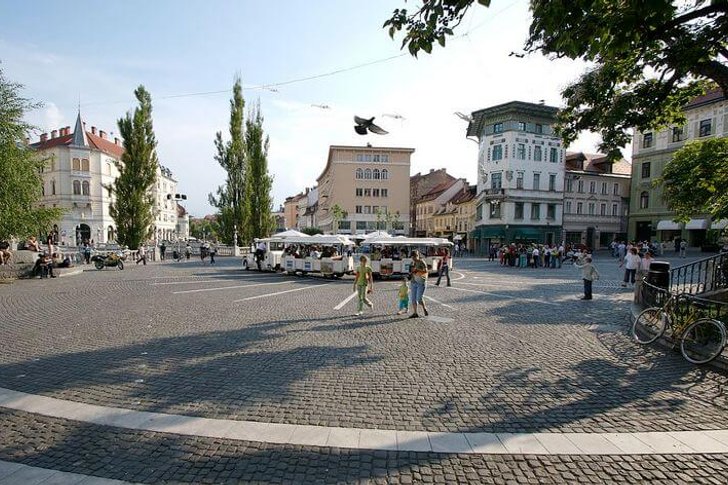
ljubljana castle
Medieval fortress of the XII century, located on a hill. In the 15th century, the castle was almost completely destroyed and rebuilt. Since then, it has served as a defensive fortification and protected the rulers from Turkish raids and peasant uprisings. During the Napoleonic Wars, the complex was again subjected to significant destruction. After another restoration and until the beginning of the 20th century, it was used as a prison.

Funicular to Ljubljana Castle
In 2006, a cable car was laid to the top of the mountain on which Ljubljana Castle stands, and a funicular was launched. Its lower station is located on Kreka Square, the upper station is on the territory of the castle. The funicular covers a distance of several tens of meters to the top of the hill in one minute. The carriage can accommodate up to 25 people. If you have time to take a seat near the glass wall, you can take panoramic photos of Ljubljana.

triple bridge
The Triple Bridge is a whole ensemble of three pedestrian bridges spanning the Ljubljana River. It is located in the historical center of the city. There used to be a wooden walkway in its place. The first stone structure appeared in the middle of the 19th century. In the 20th century, two additional wings were added to it, and as a result, the Triple Bridge was obtained. Until 2007, trams and buses ran here.

Bridge Serpent
A reinforced concrete bridge across the Ljubljana River, around which many urban legends are built. The construction is guarded by figures of stone dragons. The dragon is a recognizable symbol of the capital of Slovenia, which can be seen on the city coat of arms and the bas-reliefs of some buildings. The Serpent Bridge was built in 1901 to replace an old wooden structure. The construction was led by an engineer from Austria, J. Melan.
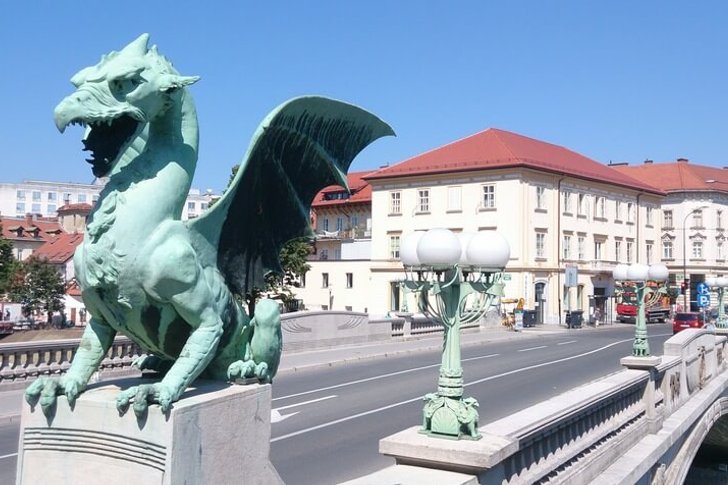
Myasnitsky bridge
Probably, in every city there is a special place where lovers come to leave an iron lock - a symbol of inviolability and strength of feelings. In Ljubljana, the Myasnitsky Bridge became such a place. Despite the unromantic name, for some reason, couples liked it. At first, the city administration tried to get rid of numerous castles, but then the authorities still reconciled.
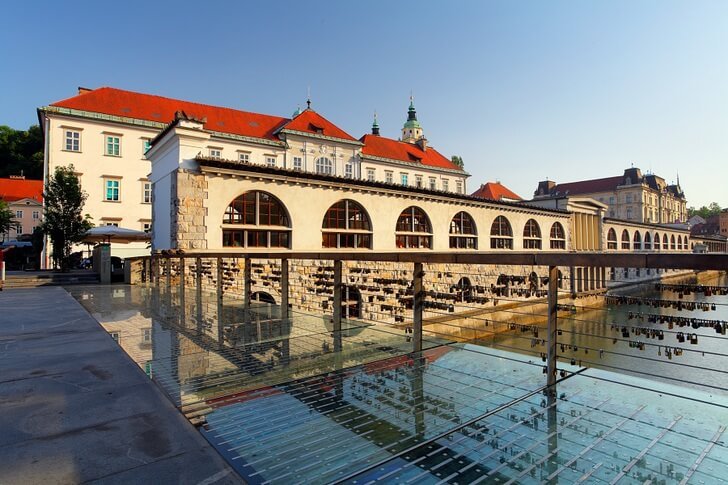
National Museum of Slovenia
The museum was founded in 1821. Thanks to the personal participation of the Austrian Emperor Franz II in financing, he quickly turned from a provincial exhibition into a full-fledged gallery. Today it is considered one of the main museums in Slovenia. It houses collections of archaeological artifacts, applied arts, engravings, coins, drawings and other valuable exhibits.
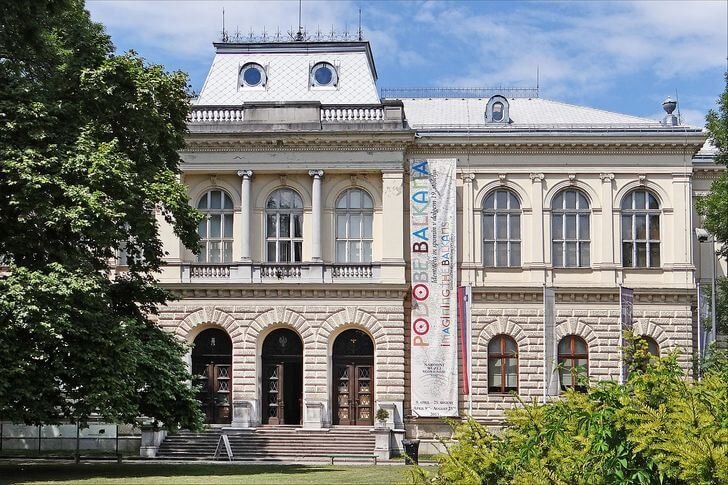
National Gallery of Slovenia
The main art museum of the country. It was founded in 1918 after the formation of a united kingdom of Slovenes, Croats and Serbs on the ruins of the disintegrated Austro-Hungarian Empire. In 1896, the collection moved to the building where it is still located. The gallery's exposition presents works by Slovenian and European masters who worked in the period from the Middle Ages to the beginning of the 20th century.
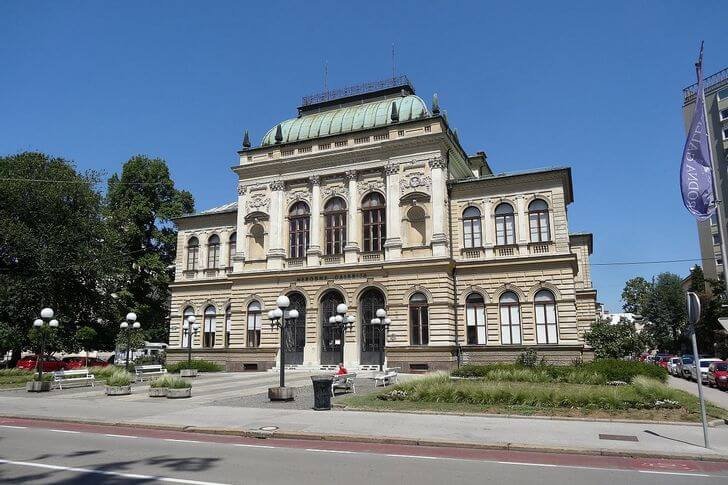
Railway Museum of Slovenia
The collection appeared in Ljubljana in the 1960s. It is located in the building of the former boiler house. In the museum, visitors will see old railway locomotives and other vehicles, as well as various devices for transmitting messages: telephones, radio stations, telegraphs. Rare steam engines are exhibited separately. The exhibition occupies a small area, but it will certainly be of interest to tourists.

Slovenian Opera and Ballet Theater
The real pride of Ljubljana is the capital's opera house. The building was erected in the Neo-Renaissance style according to the design of Czech masters A. Hrubi and J. Graska. The facade is decorated with monumental Ionic columns and statues of the Muses. The stage received its first visitors in 1892. After a recent restoration, the acoustics of the hall were significantly improved, thanks to which the masterpieces of classical music sounded in full force.

franciscan church
The temple is located on Prešeren Square. It is impossible to pass by it, as its pink facade stands out clearly from the rest of the buildings. The church was built in the XVI-XVII centuries. At first it belonged to the Augustinian monks, but then passed to the Franciscans. The building was built in the classical baroque style. It was rebuilt several times, but the architectural appearance remained unchanged.
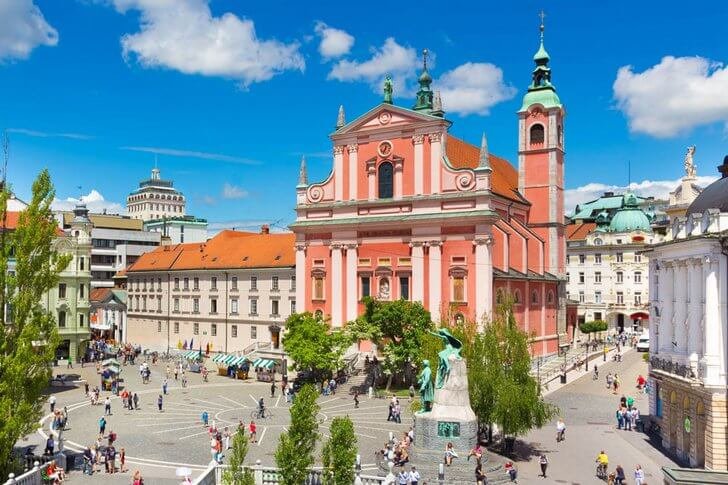
Cathedral of Saint Nicholas
The cathedral in honor of the patron saint of fishermen, St. Nicholas, was built in the 18th century by the Italian architect A. del Pozzo. Previously, a medieval basilica stood on the site of the temple. Work on the interior continued into the 20th century (in particular, J. Plechnik created a magnificent baroque altarpiece). The dome of the cathedral is visible from almost anywhere in Ljubljana, so finding the way to it is quite easy.
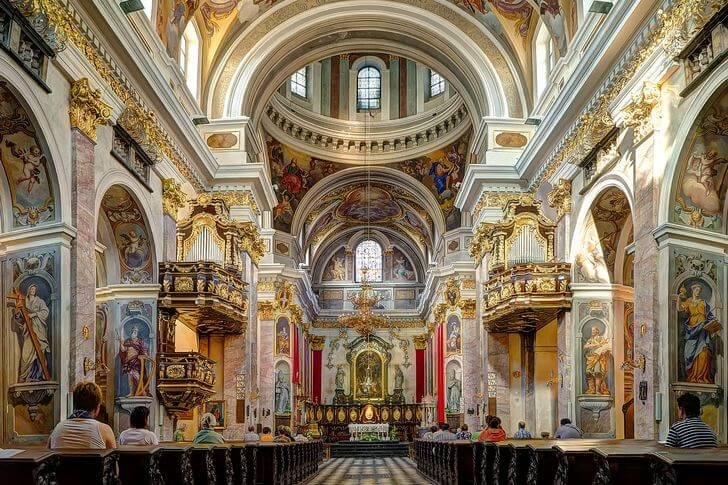
Ursuline Church of the Holy Trinity
Catholic church of the 18th century, which is considered one of the most picturesque sights of Ljubljana. Like many other buildings in the Slovenian capital, the church was built by an Italian architect. The temple is made in the Baroque style, it is distinguished by an intricately curved roof and a facade decorated with massive columns. Inside is an African marble altar designed by F. Robb.
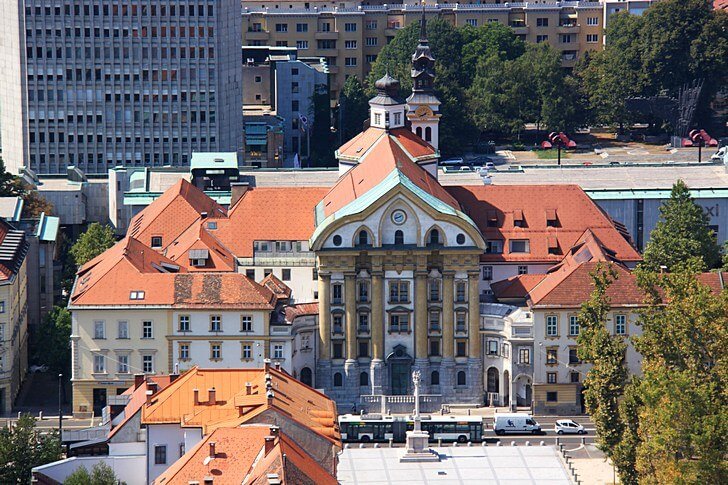
Ljubljana skyscraper
A tall 13-story building in the center of Ljubljana can only be called a skyscraper. It reaches a height of 70 meters. The building was erected in the 1930s. Local architects were inspired by the rapidly growing American skyscrapers and decided to create something similar in Ljubljana. On one of the last floors there is an observation deck with a panoramic view of the city.

Ljubljana Town Hall
The building of the city council of Ljubljana was erected in the late 15th century in the Gothic style and restored in the 18th century, giving it more modern baroque features at that time. In the inner courtyard of the town hall there is the Narcissus Fountain by F. Robb and a monument to one of the mayors of Ljubljana, I. Hribar. Opposite the building there is another fountain called "Rivers of Carniolia".

Ljubljana Central Market
The market is located in the Old Town. Like all over the world, tourists come here for local delicacies in the hope of feeling the national flavor. The architect E. Plechnik worked on the design of the market building. Here they sell fruits, herbs, vegetables, spices and local products. From all sides, the market is surrounded by attractions. Considering the small size of the historical center of Ljubljana, it will not be possible to pass by it.

Ljubljana Zoo
The city zoo is located closer to the outskirts of Ljubljana. It occupies approximately 20 hectares of area in the forested area of Tivoli - Rozhnik - Shishensky hill. As in many European menageries, the animals of the zoo live in comfortable conditions and do not feel like prisoners in cramped enclosures. In the summer, children can take part in interesting and educational activities organized by the zoo staff.
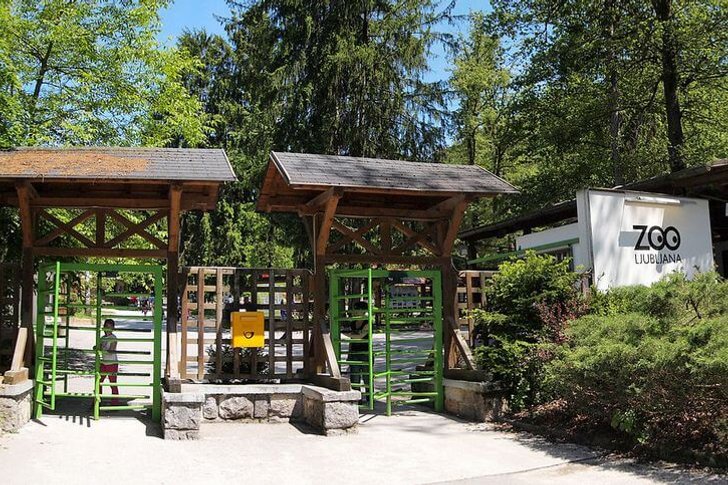
Tivoli Park
Tivoli Park appeared in Ljubljana at the beginning of the 19th century. It was smashed according to the project of J. Blanchard. At that time, the modern territory of Slovenia was part of the French provinces. In addition to natural beauties, the park has several interesting man-made attractions: the 17th century Tivoli Castle, the Tsekin mansion built in the 18th century, and the modern Sports Palace with two stadiums.

River Ljubljanica
The water artery flows through the territory of Slovenia. Its length is only 41 km. The capital of the country got its name precisely because of the river Ljubljanica. Fishing is quite popular among local residents, as pike, trout, perch and other commercial fish are found in the river. In addition to practical functions, the river also performs decorative ones - it gives the capital of Slovenia a more picturesque look.
